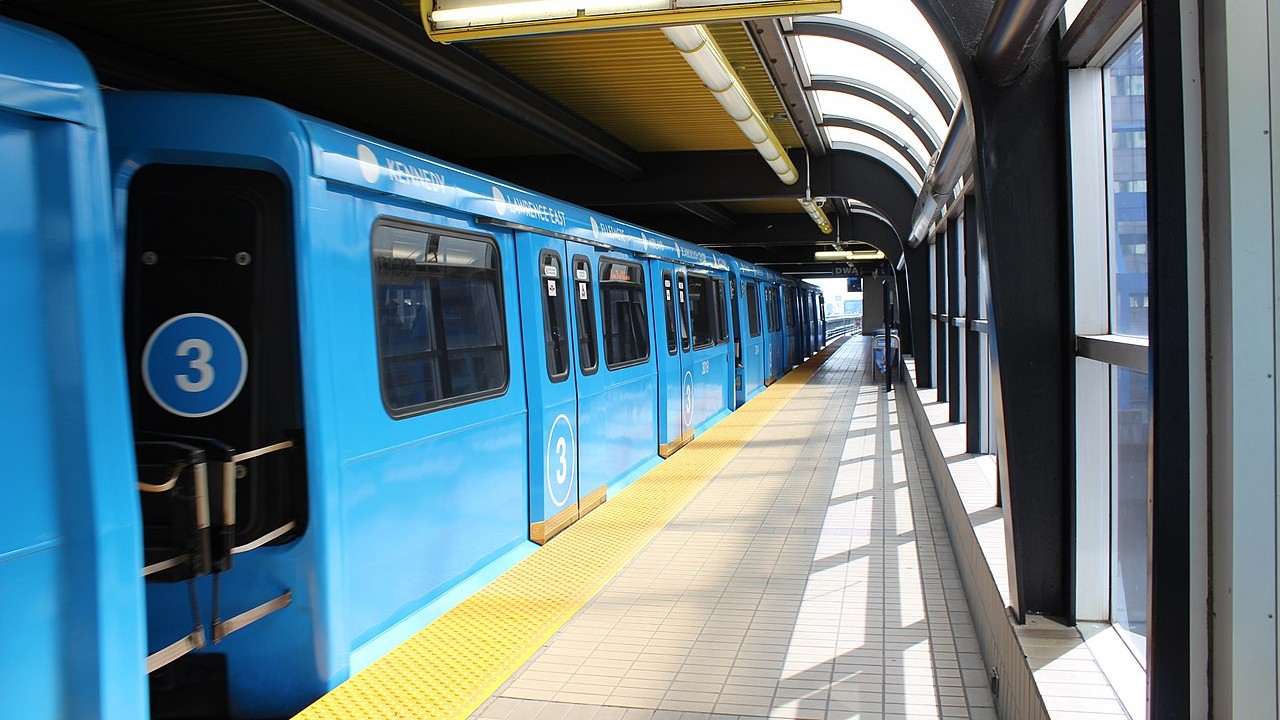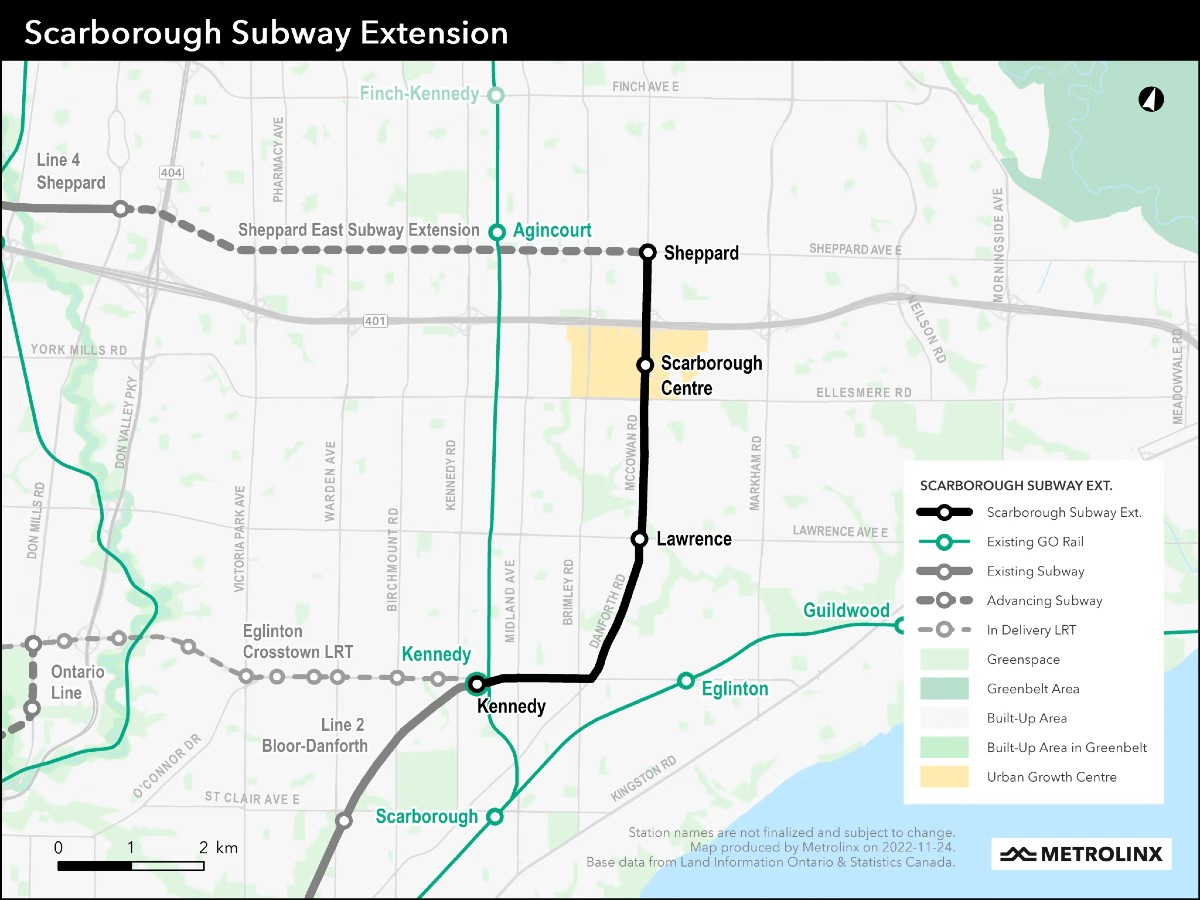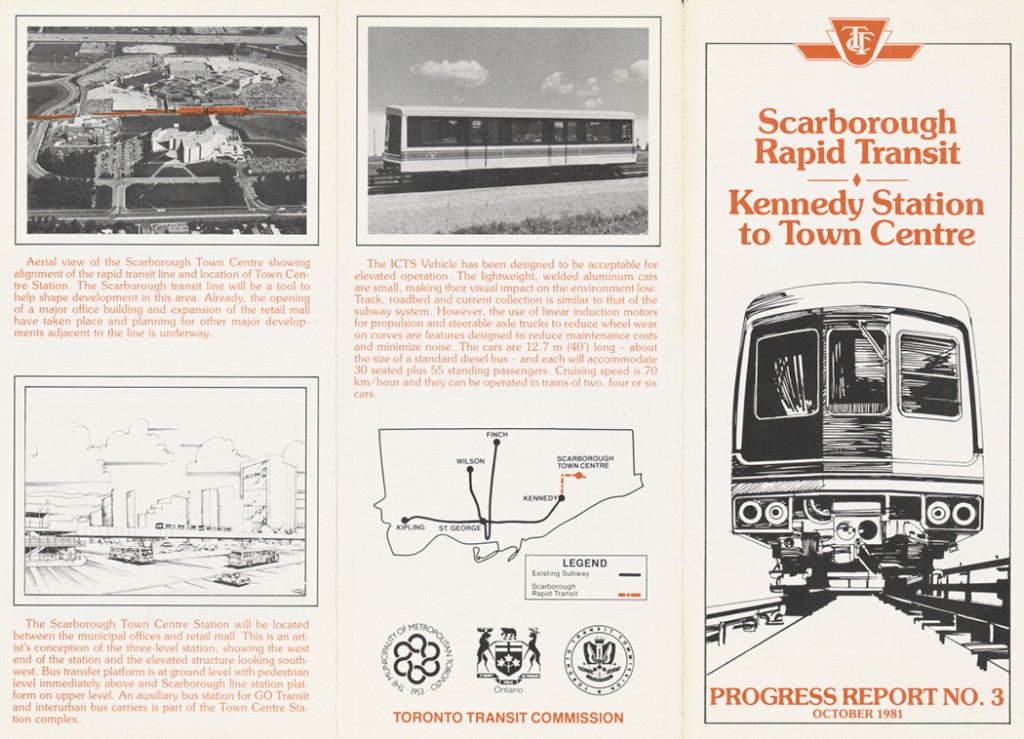What’s up with the Scarborough RT?
The SRT will permanently shut down on Nov. 19. Here‘s what you need to know.

It was Toronto’s third rapid transit line after Line 1 Yonge-University and Line 2 Bloor-Danforth. And now it’s set for decommissioning.
Line 3 Scarborough — better known by its original name, the Scarborough RT — officially opened on March 22, 1985. Since then it’s served millions of riders, connecting eastern Toronto to the rest of the city.
“The RT was always my gateway,” one Scarborough resident told Maisonneuve for a 2022 story.
But despite its critical role over the years, it’s long been plagued by issues. Now, the TTC has confirmed it will cease operations on Nov. 19, 2023.
Here’s what you need to know about the SRT, including both its history and its coming replacements.
How did the SRT come to be?
The story of the SRT is long and complicated, but here are the basics: With the opening of Scarborough Town Centre in 1973, a transit solution was needed to connect the growing area with other rapid transit, including the Bloor-Danforth line that reached to Kennedy Station in the east.
According to the indispensable Transit Toronto website, the area was considered too low capacity to justify costs for a subway and too high capacity for buses, so an “intermediate capacity transit system” was needed.
An LRT network with massive growth potential was proposed in 1975, but plans switched mid-stream because of pressure to adopt a prototype train being developed at the time by an Ontario government crown corporation. So instead of streetcars on a private right-of-way, the soon-to-be-rebranded Scarborough RT would feature new linear-induction trains on what the TTC called a “mini-subway.”
Crews broke ground in October 1981, and the Scarborough RT opened on March 22, 1985. The result was a 6.4-km, partly elevated line with six stops, stemming from Kennedy Station at the end of the Bloor-Danforth subway line to McCowan Station in the northeast.
While the opening was celebratory, problems started immediately. The line was noisy, and the rails would ice over in cold weather. Worst of all, the turning loop at Kennedy needed to be replaced with a switch as it had been designed for streetcars — not the new trains.
These initial issues were ironed out, but major upgrades, revisions, or extensions never materialized, and eventually age-related problems appeared.
The 2007 Transit City plan proposed a revitalization and expansion of the SRT, but hit a roadblock under mayor Rob Ford. He instead proposed a Scarborough subway, creating a multi-year back-and-forth in which plans were put on hold.
After many false starts on a potential LRT network for the area, the Scarborough Subway Extension was eventually approved, and the SRT’s days were officially set to come to an end.
Still, despite all the challenges, the SRT moved over 78,000 people on a typical weekday in 2019 — the last year of typical ridership prior to the COVID-19 pandemic.
What’s the plan for rapid transit in Scarborough?
To hear the TTC tell it, the SRT has long been overdue for major changes. SRT trains are roughly a decade past their intended design life, and have already been overhauled to extend that life.
The good news is there’s an already approved replacement on the way. The 7.8-km eastern extension of the Line 2 Bloor-Danforth subway will feature three stops, including one at Scarborough Centre. It’s expected to cost up to $6 billion to build, and see over 100,000 daily boardings by 2041.

That said, the extension isn’t due until 2030 — so an interim solution was deemed necessary.
The TTC is currently working on design for a $49-million project that will convert the existing right-of-way between Kennedy Station and Ellesmere Station for bus use until the subway extension is ready.
However, since that plan requires a couple of years of construction and won’t be ready until at least 2025, there’s a further interim bus plan to keep transit flowing in the area.
Until another solution is ready, buses will travel north from Kennedy Station along Kennedy Rd., and then travel along Ellesmere to Scarborough Centre. When travelling south, they’ll run along Midland Ave. to Eglinton Ave., and then back to Kennedy.
This route won out over three other potentials, and was confirmed in April 2022 along with news of the right-of-way conversion.
What’s the latest on the Scarborough subway extension?
- Tunnelling for the subway extension began in January (see YouTube clip above). The tunnel boring machine for this project was named Diggy Scardust, a play on David Bowie’s “Ziggy Stardust.”
- In December, Metrolinx announced a consortium partner in charge of building the project’s stations, rails, and systems. The consortium is called Scarborough Transit Connect, and is completely separate from the tunnelling partner. According to Metrolinx, splitting the project in half this way will ensure construction is completed as quickly as possible.
Code and markup by Kyle Duncan. ©Torontoverse, 2023

